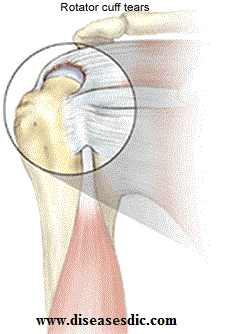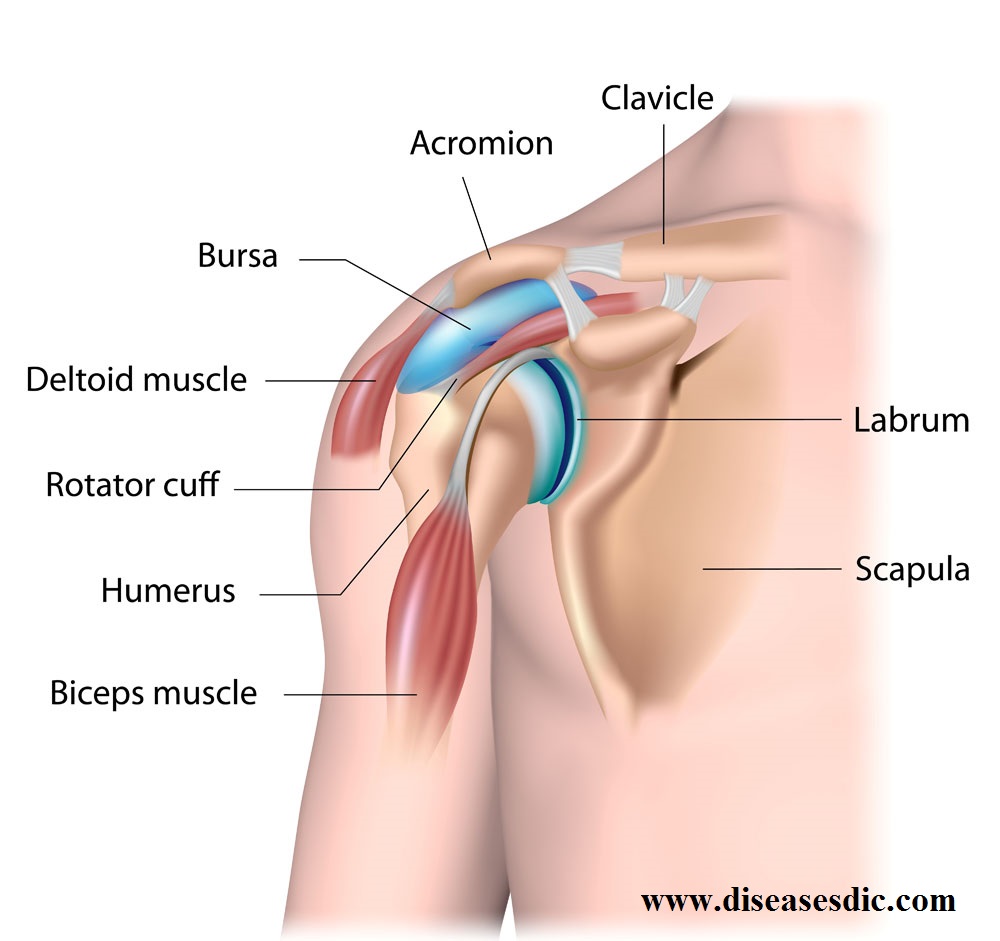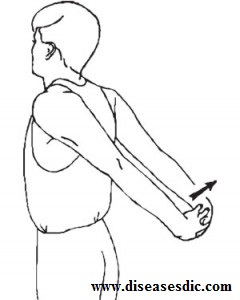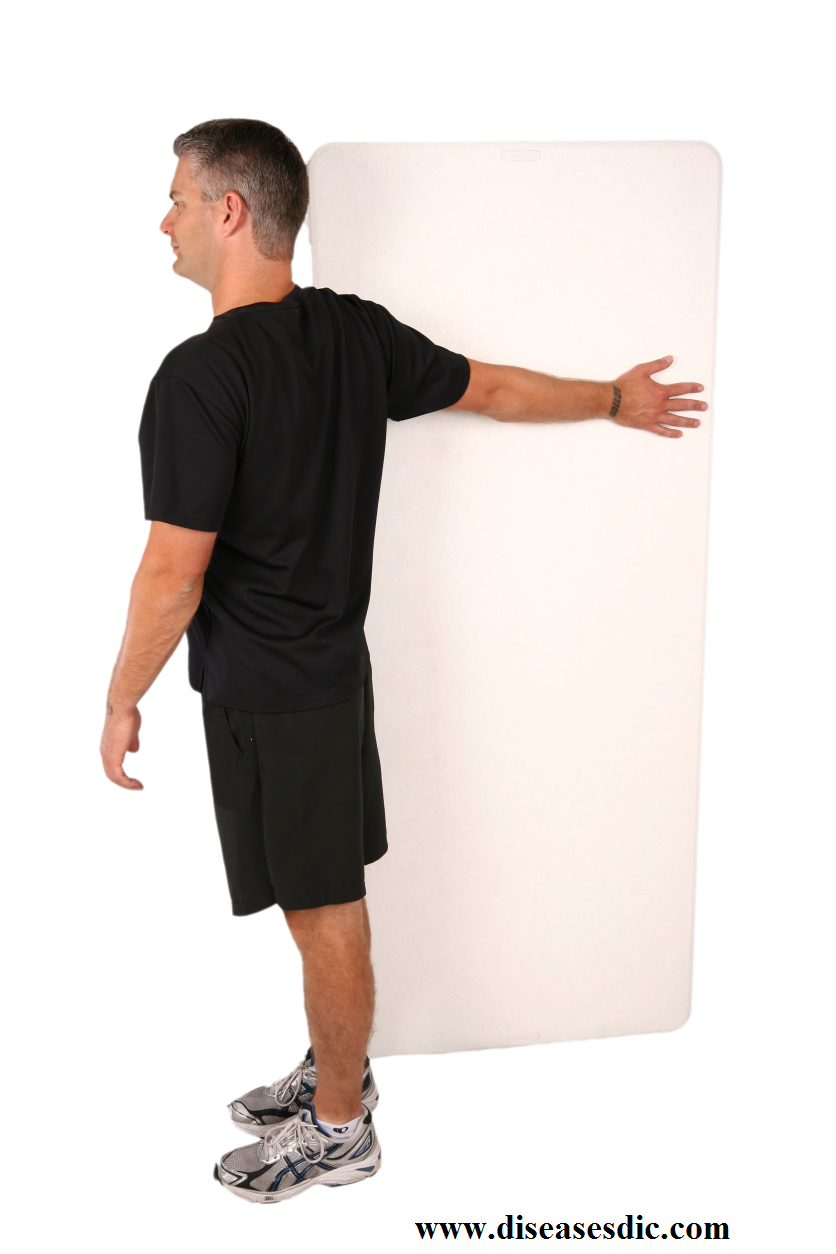Shoulder Impingement Syndrome – Definition
Shoulder impingement refers to mechanical compression and/or wear of the rotator cuff tendons. The rotator cuff is actually a series of four muscles and tendons connecting the scapula (shoulder blade) to the humeral head (upper part of the arm bone). These muscles are located deep in the shoulder, beneath the deltoid muscle that gives your shoulder its contour.

The rotator cuff is important in maintaining the upper arm bone within the socket during normal shoulder function and also contributes to shoulder strength during activity. Normally, the rotator cuff glides smoothly when moving. Any process that compromises the gliding function of the rotator cuff is known as shoulder impingement.
Anatomy of shoulder joint
To understand the shoulder impingement syndrome and its causes, you need to be familiar about the anatomy of your shoulder joint.
Your shoulder joint is formed by 3 bones:
- Upper arm (humerus)
- Shoulder blade (scapula)
- Collarbone (clavicle)

Anatomy of Shoulder joint
- The ball at the top of the upper arm fits into the socket of the shoulder blade. There are also a number of muscles, tendons, and ligaments around the shoulder.
- There are four rotator cuff muscles that work to keep the upper arm bone centered in the shoulder socket. They help to stabilize the shoulder joint. The tendons of the rotator cuff muscles join together and attach to a bony surface on the top of the upper arm bone.
- There is a space under the acromion (bony arch) of the scapula called the subacromial space. The rotator cuff tendons pass through this space.
- In between the acromion and rotator, cuff tendons is the subacromial bursa. The bursa is a fluid-filled sac that helps to reduce friction and provides a smooth surface for the rotator cuff tendons to glide
Causes
Impingement syndrome occurs when there is rubbing between the rotator cuff, the bursa, and the acromion. Some possible causes are as follows:
- The rotator cuff may be injured or incompetent
- There may be a bony deformity under the acromion, like a bone spur
- The coracoacromial ligament can calcify or thicken, usually secondary to a trauma
- There may be an acromial defect where it is shaped abnormally
- The subacromial bursa may be thickened
Secondary impingement can occur from an already unstable shoulder.
History
Impingement syndrome was reported in 1852. Impingement of the shoulder was previously thought to be precipitated by shoulder abduction and surgical intervention focused on lateral or total acromionectomy. In 1972, Charles Neer proposed that impingement was due to the anterior third of the acromion and the coracoacromial ligament and suggested surgery should be focused on these areas. The role of an anteriorinferior aspect of the acromion in impingement syndrome and excision of parts of the anterior-inferior acromion has become a pivotal part of the surgical treatment of the syndrome.
Occurrence of Shoulder Impingement Syndrome
The incidence of shoulder pain in the community setting is high, estimated to be 11.2 per 1000 person-years. Out of a sample of 644 people, 170 (26%) reported shoulder pain with at least 70% subacromial impingement syndrome. Mostly shoulder pain in 66% of the swimmer, 57% of a professional pitcher, 44% of a collegiate volleyball player and 20% of a collegiate javelin thrower.
Types of Shoulder Impingement Syndrome
Shoulder impingement is classified as either internal or external.
External impingement refers to a structural abnormality or interference with the proper operation of the rotator cuff. Primary impingement is generally due to the abnormally shaped arch in the shoulder bones or to bone spurs that come with degeneration of the bone. Secondary impingement usually results from poor shoulder blade stabilization that changes the position of the arch and causes rubbing; it can also be a consequence of tendons weakened from overuse.
Internal impingement generally occurs in athletes whose sports focus on throwings, such as javelin or baseball. The underside of the rotator cuff tendons rubs against a different bone (glenoid labrum) to cause pain at both the back and front of the shoulder.
Risk factors for Shoulder Impingement Syndrome
- Repetitive activity at or above the shoulder during work or sports represents the main risk factor for SIS.
- As with many shoulder disorders, increasing age also predisposes to SIS.
- SIS is common among athletes who participate in overhead sports. These sports may include swimming, throwing, tennis, weightlifting, golf, volleyball, and gymnastics.
- Overhead work activities that can increase the risk for developing SIS include painting, stocking shelves, and mechanical repair
Symptoms of Shoulder Impingement Syndrome
Commonly rotator cuff impingement has the following symptoms:
- An arc of shoulder pain approximately when your arm is at shoulder height and/or when your arm is overhead.
- Shoulder pain that can extend from the top of the shoulder to the elbow.
- Pain when lying on the sore shoulder.
- Shoulder pain at rest as your condition deteriorates.
- Muscle weakness or pain when attempting to reach or lift.
- Pain when putting your hand behind your back or head.
- Pain reaching for the seat-belt.
Diagnosis
- A physical therapist will perform an evaluation and ask you questions about the pain you are feeling, and other symptoms.
- Your physical therapist may perform strength and motion tests on your shoulder, ask about your job duties and hobbies, evaluate your posture, and check for any muscle imbalances and weakness that can occur between the shoulder and the scapular muscles.
- Special tests involving gentle movements of your arm and shoulder may be performed to determine exactly which tendons are involved.
- X-rays may also be taken to identify other conditions that could be contributing to your discomforts, such as bony spurs or abnormalities, or arthritis.
Specific shoulder impingement tests
Empty Can Test – You will be asked to put your arm out in front of you at a 45-degree angle to your body, with the thumb pointing to the floor (as if holding an empty can). The therapist will ask you to raise your arm whilst they resist your movement. This tests the Supraspinatus tendon.
Neer’s Sign – The therapist will position your arm with the thumb facing down and at a 45-degree angle to your body. They will then lift your arm up, above your head. If you experience pain or discomfort, you may have an impingement of supraspinatus.
Hawkins-Kennedy Test – Your arm will be raised in front of you to 90° and the elbow bent. The therapist will then medially rotate (turn the wrist down and elbow up) the arm. If this causes pain you probably have an impingement of Supraspinatus.
Treatment and medications
Initial treatment for Impingement Syndrome or Rotator Cuff Tendinitis is usually conservative to relieve swelling and inflammation and involves the following:
- Avoiding activities which aggravate the pain
- Application of cold packs to shoulder about thrice daily
- Use of NSAIDs like ibuprofen or naproxen.
Additionally, the following may also be done to relieve symptoms:
Physical Therapy: This initially consists of stretching exercises and other passive exercises for restoration of range of motion and reduction of pain. Once the pain is brought under control, exercises are started for regaining strength of the shoulder.
Use of Steroids: If the above mentioned conservative treatments fail to relieve symptoms then steroid injections may be used to reduce symptoms. The function of the steroid injection is to reduce inflammation and control the pain.
Use of shoulder braces: Wearing a brace to stabilize your shoulder is important for healing if you feel that you have an impingement issue.

Surgery: If all forms of conservative treatments and steroid injections fail to relieve symptoms, then a surgical route is taken in the form of a rotator cuff surgery, which usually results in complete relief of symptoms. This is done via arthroscopy in which an instrument called an arthroscope is inserted which has a camera to look at the damaged structure. This is the most non-invasive method of treating Impingement Syndrome or Rotator Cuff Tendinitis.
Usually, open shoulder surgery is not necessary for Impingement Syndrome or Rotator Cuff Tendinitis. However, this route can be taken in cases of a large rupture of the tendon.
Exercises for Shoulder Impingement Syndrome
Some Of The Exercises Done To Stretch The Shoulder Include:
Posterior stretching

Anterior stretching

Pendulum exercises

Wall press

 Diseases Treatments Dictionary This is complete solution to read all diseases treatments Which covers Prevention, Causes, Symptoms, Medical Terms, Drugs, Prescription, Natural Remedies with cures and Treatments. Most of the common diseases were listed in names, split with categories.
Diseases Treatments Dictionary This is complete solution to read all diseases treatments Which covers Prevention, Causes, Symptoms, Medical Terms, Drugs, Prescription, Natural Remedies with cures and Treatments. Most of the common diseases were listed in names, split with categories.








No treatment is offered for shoulder impingement Syndrome. I have a serious SIS condition and would like to know how to treat it
Please consult a doctor.
my right shoulder has pain that is on and off. sometime I feel a burning sensation and others I feel like like iam carrying heavy load. especially when I sleep. what’s the remedy for. this prob.
Please consult a doctor.
Dr Larry helped got off this terrible illness and im greatfull to him. contact Dr Larry on [email protected].
My right-hand shoulder i can’t rise it up
Please consult an Orthopaedic specialist.
I have send no comments, but one thing I am suffering my shoulder pain both left and right. And also my two hands will climb up and down.so can you give me any suggestions in this matter.
Please consult a doctor to know the possibility of the causes.
my Dad have been on a severe pain all over his bone, what is the way out?
For appropriate diagnosis consult a doctor.
My right shoulder has been burning and hurting terribly and it now has went to my left shoulder and they both hurt so much every day. My doctor ordered X rays.They said I have spurs and he gave me Remeron for decreased inflammation.it helps some but not enough.
Please consult a physical therapist to follow a regular physical therapy that soothes your pain.
i have been experiencing shoulder pains for some time now, expecilly in the night. i was given pain killer and Voltaren to massage it anytime i went to the hospital, but am not seeing any improvement. what should i do?
Please consult a rheumatologist.
please when i play football and i struggle with an opponent for ball then my right shoulder disjoint. please what should i do.
thanks
please consult an orthopedist.
I experienced mine in a fight and after then I started feeling pain on my right shoulder. Did some x-ray but found nothing, my shoulder keeps pulling out what the cause please.
please consult an orthopaedist.
Pain started with right shoulder, but now in both. At night becoz of pain, it is hard to sleep. x-ray has no prob. should I start gym to increase muscles power.
Please consult an orthopedist.
A very good app for self treatment of SIS.It helps the sick to know how to lay complaints to medical doctors when faced with such a situation.